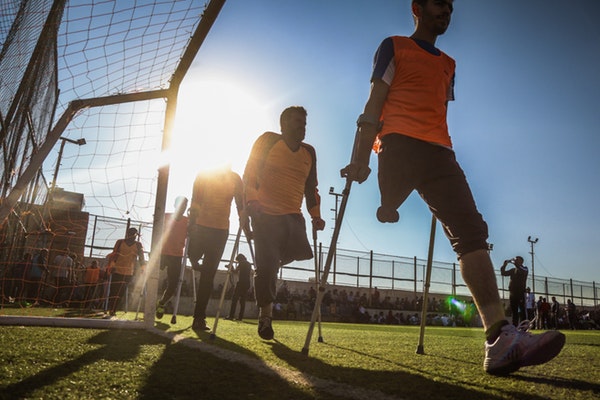Social statistics show that the proportion of disabled people in societies is increasing. Thus there are more and more demands on special assistance and services. Climate change, environmental pollution and individual stress pose significant burdens to the majority of the constantly increasing urban population, especially the disabled because they are dependent on suitable environments to serve their needs. One billion people, or 15% of the world’s population, people with disabilities are uniquely affected by climate change in dynamic ways.
Disability Overview
Comprising a significant 10 percent to 15 percent of the global population, disability commonly is higher for developing countries.
These persons with disabilities population include a wide array of mobility, sensory (visual, hearing), developmental, intellectual and emotional impairments, as well as chronic health conditions.

Disabled persons are more likely to experience adverse social and economic outcomes than persons without disabilities, such as less education, poorer health, lower levels of working, and higher poverty rates.
Individuals with multiple disabilities may experience social or medical factors differently depending on their race, gender, culture, language (including sign language for deaf people), nationality, geography and other factors. These sub-populations are complexly impacted by factors associated with health and requirements for assistance for survival.
Climate Change and Disabled People
Climate change is impacting negatively on people with disabilities. Many consequences must be addressed regarding specific climate change impact on specific individuals and categories of people with disabilities. Of course, everyone is vulnerable in any kind of disaster or environmental degradation.
Vulnerable Populations
Disabled persons are greater vulnerability during storms, floods and extreme heat; susceptibility to invasive disease; and the complex challenges of relocation and forced migration (i.e. finding new housing or support networks for disabled persons). Climate changes affect these people significantly at virtually all levels compared to those without disabilities.
Lower Survival Rate
Natural disasters and refugee situations from past show that people with disabilities have a lower survival rate than those without disabilities. They may even be neglected or left to die. These are clear evidence from past and current prove natural selection. But there must have ethical ways of tackling these issues.
Many people trapped in flooded nursing homes revealed the planning failed of leaders in considering people who are vulnerable from disasters.
Negative Impacts On Survival Factors
Climate change influence is more complex and enduring than natural disasters. It affects people with disabilities in dynamic ways. For examples of health and survival factors, high temperature harms people with spinal cord injuries who are unable to perspire. There will need cooling centers for them.
Requirements of Assistance For Survival
Effective communication high technologies are necessary for alerting people with hearing loss on evacuation planning.
Ramps into shelters, hospitals or shopping malls, etc. are essential for mobility-impaired persons, and indeed for anyone unable to safely utilize standard buses.
Harder in forced migration
Another significant impact on people with disabilities as a result of climate change is that of forced migration, now occurring all over the world. That may be due to natural disaster or regional planning.
Disabled Eco-warriors
Civil and human rights protect people with disabilities through public education and laws, such as the Americans with Disabilities Act (ADA) and the United Nations Convention on the Rights of People with Disabilities (CRPD).
The UN Convention on the Rights of Persons with Disabilities has greatly encouraged people with disabilities around the world to be aware of as deserving of human rights protection. Full inclusion in climate resilience will be a complex undertaking due to personal, social, economic and political circumstances of this community. That will require large-scale initiatives and strong collaborations between climate justice and people with disabilities.
Fortunately, those currently addressing climate change and disability are well-engaged with a social justice framework. Thus strategies are developing to safeguard the broad, intersectional populations of people with disabilities as climate change unfolds.

The World Institute on Disability has connected with the United Nations, the International Organization on Migration to cooperate as meaningful allies. People with disabilities have participated in actions on climate change in general as eco-warriors. They promote communication as trainers and leaders in climate change mitigation and adaptation activism, given talks and workshops, and published articles, videos and social media releases.
Conclusion
We know that climate change impact is happening now all over the globe. The advance planning and infrastructure-building to cope with impacts are particularly crucial for people with disabilities. Ultimately, disabled people have created opportunities for themselves and act like a real eco-warrior. They all aim to reduce the impact of climate change on human beings in general and the disabled community in particular.
